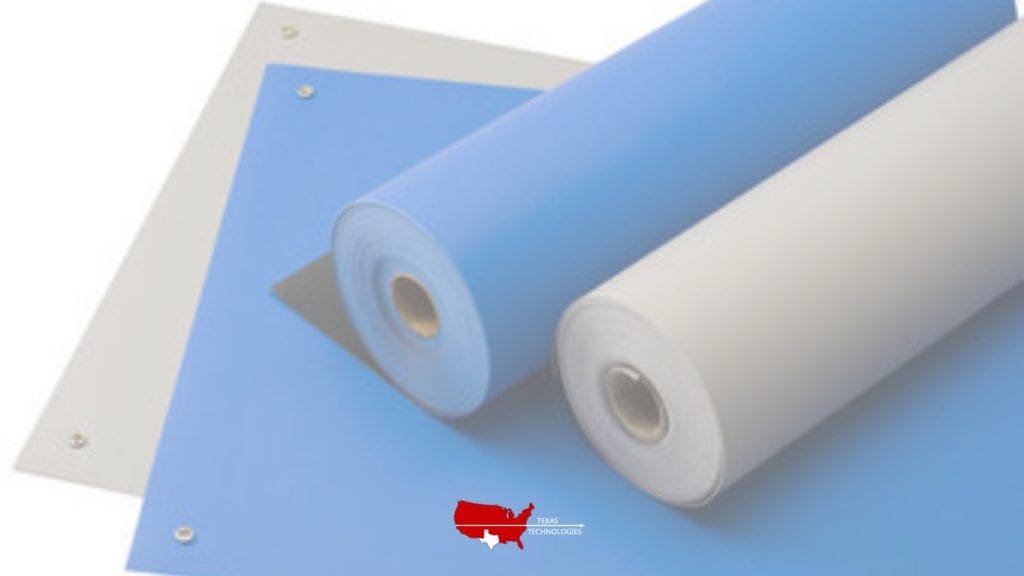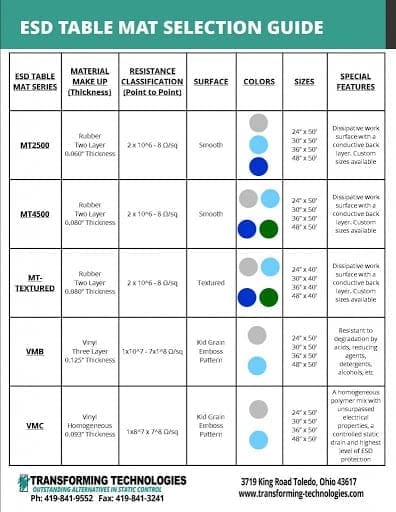ESD Mat Selection

An ESD mat is a very important part of an ESD protected area. ESD mats are designed to eliminate static on its surface and of objects placed upon it. It does this by having a conductive material embedded within the mat that collects the static and sends it to ground(earth). This is usually accomplished by connecting the mat to ground with a ground. It’s important to discharge at a slow rate, therefore a resistor in the ground cord is recommended.
ESD mats are generally found in two categories: Vinyl and Rubber. ESD Vinyl mats are the most widely used material for table top or work surface applications. They are cost effective, easy to cut, and provide excellent static dissipation. ESD Rubber mats are used where high resistance to heat and chemicals is required. The type of material is a primary concern if you will be using a constant monitor because some materials are incompatible with certain constant monitors.
We have condensed all the selection criteria such as material construction, resistance ranges, surface, color, style, or size into a chart for your convenience.

When choosing an ESD mat, first use your specific application to narrow your choices, such as mat material and electrical properties. Carefully plan and budget your workstation and estimate wear and tear so that you can choose to purchase a full roll or a pre-cut mat. Finally, do not let cost dictate your decision – saving a few dollars on low quality matting could have very costly consequences via catastrophic damage, latent failures and customer complaints. If you have questions or are looking for a product you don’t see in our vast online catalog, please contact our Texas Technologies specialists to assist you.


